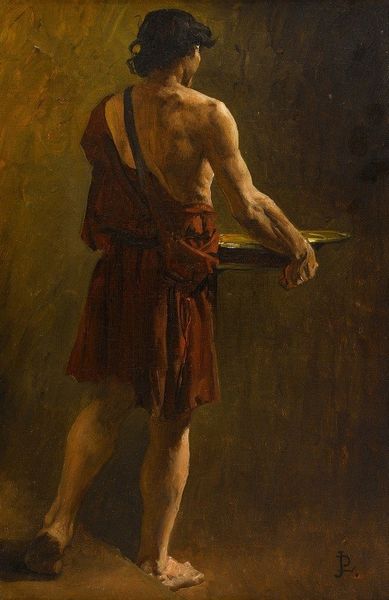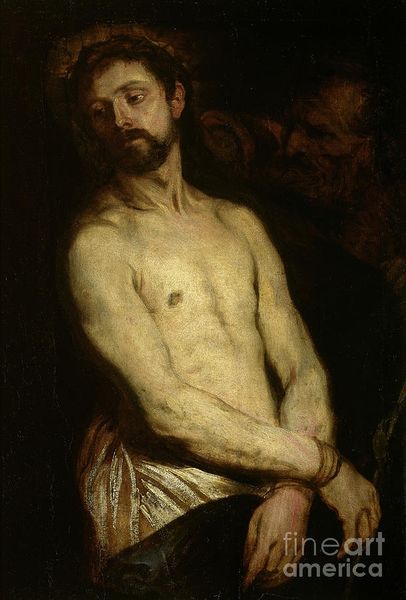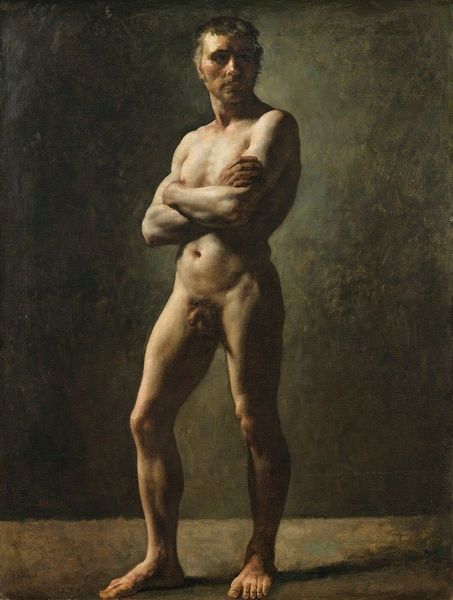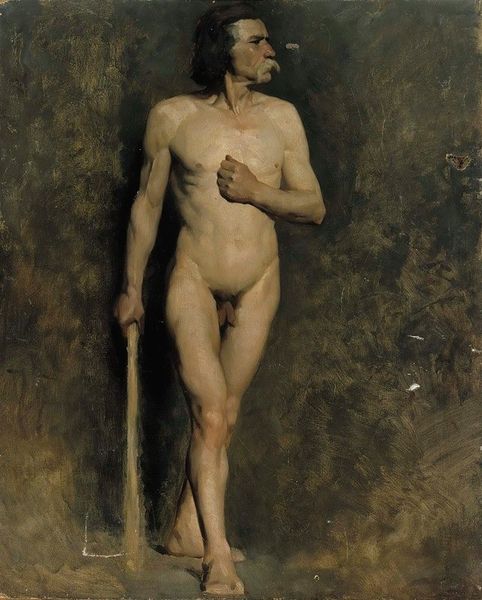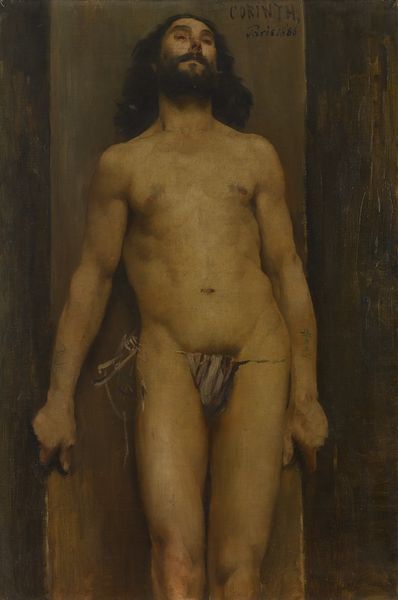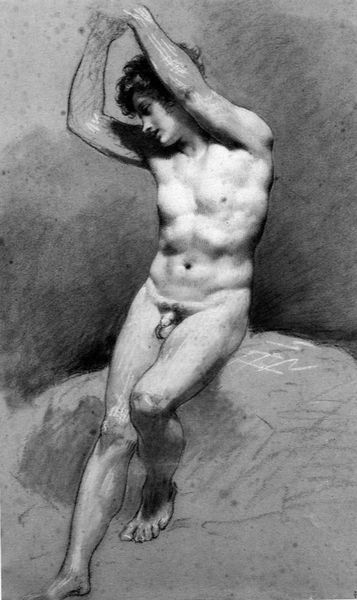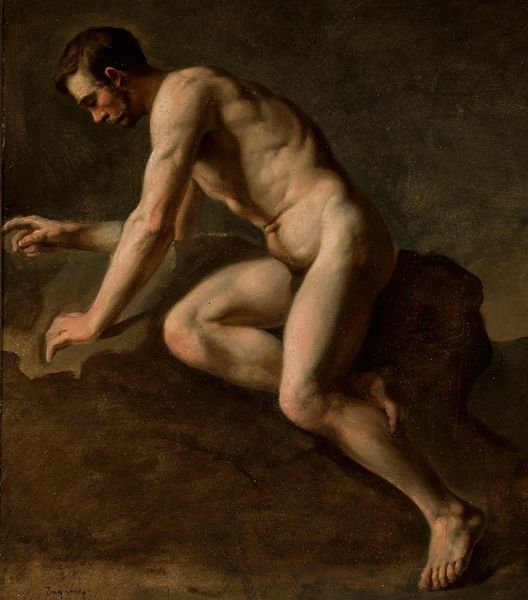
#
impressionistic
#
figurative
#
charcoal drawing
#
possibly oil pastel
#
oil painting
#
neo expressionist
#
acrylic on canvas
#
underpainting
#
painting painterly
#
charcoal
#
watercolor
Copyright: Public Domain: Artvee
Curator: Looking at this intense portrayal of human suffering, we find ourselves contemplating Ladislav Mednyánszky's "Kneeling Convict," created sometime between 1878 and 1880. Editor: The first thing that strikes me is the materiality of the scene. The earthy tones, the almost rough handling of the paint – or is it charcoal? It evokes a visceral sense of the convict’s despair and physical confinement. Curator: Indeed, it’s believed that Mednyánszky explored various materials here; likely oil paint with possible use of charcoal in the underdrawing. Let’s consider the production; it aligns with Mednyánszky's broader social critique, focusing on marginalized individuals. The image presents a direct connection to the penal system as a material reality, showing us how it grinds down human lives. Editor: Absolutely, the image feels laden with the historical weight of institutional power. I am immediately reminded of debates surrounding prison reform at the time, where public sympathy for convicts began to challenge old views. Seeing the image in that light suggests the artwork serves to indict the penal system and perhaps stir reform movements. Curator: Precisely, such pieces often functioned as poignant indictments within wider social and political discourse. We are looking at both the subject's literal bondage, through man-made constraints like shackles or bindings. The subdued palette reflects the bleak conditions of imprisonment. Editor: And that brings to mind the question of artistic labor too. What’s interesting here is that he seemingly adopts a style that reflects the harsh subject: not neat brushstrokes but frantic almost scribbling. Are the hurried marks an effort to quickly record social injustices, or is his process an empathetic act, embodying the prisoner's restless despair through gesture? Curator: A very perceptive point! We need to consider what it meant, then, for Mednyánszky to represent marginalized communities. This allows art lovers to empathize with groups systematically stripped of human rights. Editor: The convergence of material choices and social engagement creates a powerful, lasting impression. Curator: It really is, and I hope this work leads to us reconsider the role of the image as not simply an aesthetic object, but as a tool of engagement with lived historical realities.
Comments
No comments
Be the first to comment and join the conversation on the ultimate creative platform.
